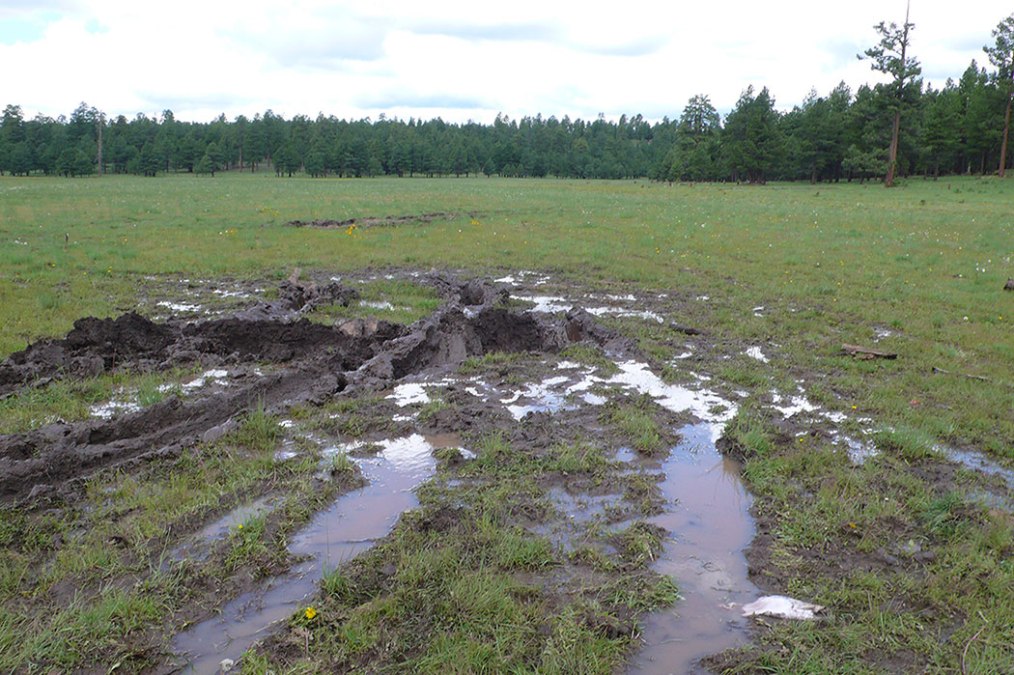Kelly Motorized Trails Project: more noise, more damage
The Kelly Motorized Trails project will stretch from Lake Mary Road to Munds Park, wrapping around Mountainaire, with trailheads on I-17 and Lake Mary Rd.
How do you feel about this project? Do you want to invite more ORV use to your National Forests? Do you feel like the current level of enforcement is enough to protect your public lands? Check it out: http://www.fs.fed.us/nepa/fs-usda-pop.php/?project=36911
Have something to say? Send your comments on the plan to the Forest Service before Sept. 30, 2012, to comments-southwestern-coconino-flagstaff@fs.fed.us.
Coconino National Forest officials know they can’t possibly control off-road vehicles, so why add more? Cross-Country Travel is Causing Resource Damage on the National Forest.
The Coconino National Forest has the greatest amount of nonmotorized recreational use of any northern and central Arizona forest. Less than 10% of Coconino National Forest users participate in motorized trail and Off-Highway Vehicle (OHV) use, while 70% or more wish to hike, walk, and view wildlife and natural features. Yet, only 0.6% of the Coconino National Forest outside of Wilderness is more than 2 miles from an open road. The Coconino National Forest recently finalized a plan to retain 3,100 miles of open roads, even though it can only afford to maintain 600 miles of roads. Where will the money come from?
Almost 1 out of 5 OHV users prefer not to stay on existing, well-defined roads. Most motorized users are not familiar with the rules and requirements of the Coconino National Forest, and drivers often trespass from established trails. For example, a USDA investigation found 73% of land managers on National Forest lands in the Pacific Southwest Region (Region 5) observed or received reports of recreation four-wheelers going off established roads and trails.
The Kelly Motorized Trails System is likely to become a destination location that will increase the total number of motorized vehicles in the area. Studies show that current motorized users in the Coconino National Forest are mostly local, and most visitors (both local and non-local) value quieter, more natural experiences. There is an abundance of user-created trails in this area, and it is unclear how creating new trails and inviting more users will prevent the ongoing proliferation of non-system trails. Trespass will be especially difficult to prevent because several of the roads in the project area are designated as dispersed camping areas. It will also be impossible to protect campers from continuous noise and dust. The Coulter Park area, for example, is very popular for camping.
This project, as planned, is a bad idea.
Posted on September 5, 2012, in Uncategorized. Bookmark the permalink. Leave a comment.


Leave a comment
Comments 0